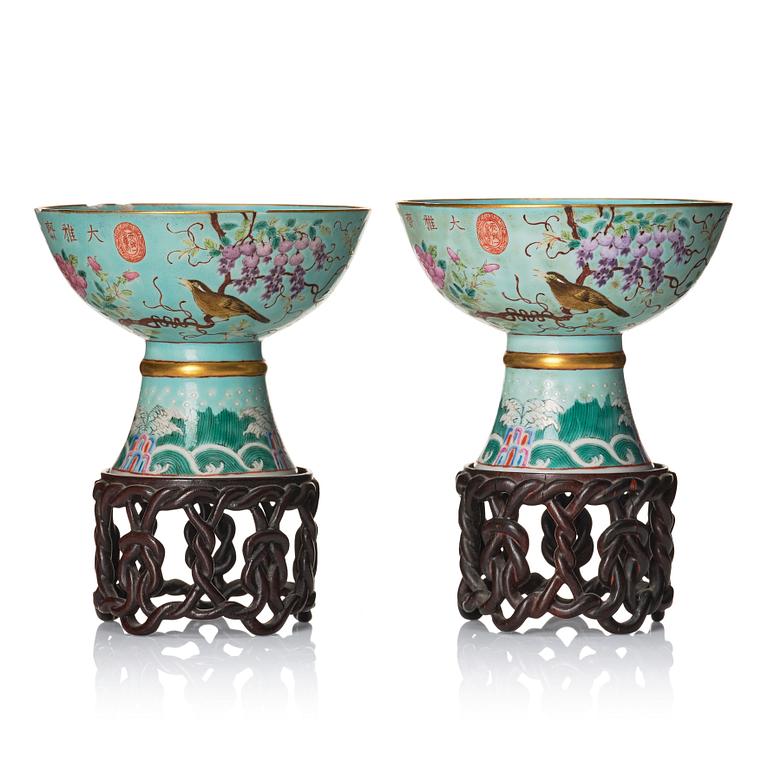A pair of Chinese stemcups, with the mark of dowager empress Ci Xi, Dayazhai, late Qing dynasty.
Decorated in enamelss with peonies and wisteria in bloom all against a turquoise ground. The foot decorated with wave formations. With the Dayazhiang mark of dowager empress Ci Xi. Height 9 cm, diameter 11 cm. On two wooden bases with carved decor, the bases height 5 cm.
Wear. One with damages.
Kirjallisuus
Dayazhai ceramic works have mainly three inscriptions, namely “Dayazhai”, “Tiandi Yijia Chun” and “Yongqing Changchun”. “Tiandi Yijia Chun” is where Empress Dowager Cixi lived in the Old Summer Palace when she was new in the palace, where “Dayazhai” was one of the rooms. Emperor Xianfeng Emperor also wrote down “Dayazhai” on a horizontal inscribed board as a gift to Cixi. These two inscriptions both meant something special for Cixi. Therefore, when Cixi’s residence in the Old Summer Palace was rebuilt in the 12th year under Tongzhong’s reign (1873), both the building and the wares in it were marked with these two inscriptions.


















































